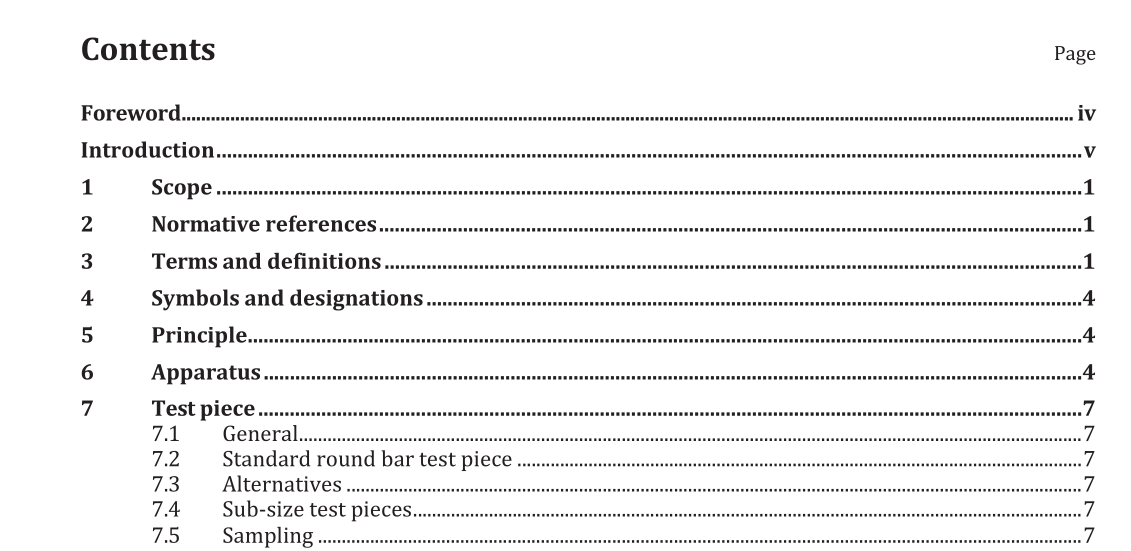ISO 6892-4:2015 pdf download.Metallic materials — Tensile testing — Part 4: Method of test in liquid helium
1 Scope
This part of ISO 6892 specifies the method of tensile testing of metallic materials in liquid helium (the boiling point is –269 °C or 4,2 K, designated as 4 K) and defines the mechanical properties that can be determined. This part of ISO 6892 may apply also to tensile testing at cryogenic temperatures (less than –196 °C or 77 K), which requires special apparatus, smaller test pieces, and concern for serrated yielding, adiabatic heating, and strain-rate effects. To conduct a tensile test according to this part of ISO 6892 at 4 K, the test piece installed in a cryostat is fully submerged in liquid helium (He) and tested using displacement control at a nominal strain rate of 10 −3 s −1 or less. NOTE The boiling point of the rare 3 He isotope is 3,2 K. Usually, the tests are performed in 4 He or a mixture of 3 He and 4 He with a high concentration of 4 He. Therefore, the temperature is, as designated before, 4 K.
2 Normative references
The following documents, in whole or in part, are normatively referenced in this document and are indispensable for its application. For dated references, only the edition cited applies. For undated references, the latest edition of the referenced document (including any amendments) applies.
ISO 6892-1:— 1) , Metallic materials — Tensile testing — Part 1: Method of test at room temperature
ISO 6892-3, Metallic materials — Tensile testing — Part 3: Method of test at low temperature
ISO 7500-1 1 , Metallic materials — Calibration and verification of static uniaxial testing machines — Part 1: Tension/compression testing machines — Calibration and verification of the force-measuring system
ISO 9513, Metallic materials — Calibration of extensometer systems used in uniaxial testing
3 Terms and definitions
For the purpose of this document, the terms and definitions given in ISO 6892-1 and in ISO 6892-3 apply.
3.1 adiabatic heating
internal heating of a test piece resulting from deformation under conditions such that the heat generated by plastic work cannot be quickly dissipated to the surrounding cryogen
3.2 axial strain
longitudinal strains measured at opposite or equally spaced surface locations on the sides of the longitudinal axis of symmetry of the test piece
Note 1 to entry: The longitudinal strains are measured using two or more strain-sensing transducers located at the mid-length of the parallel length.
3.3 bending strain
difference between the strain at the surface of the test piece and the axial strain
Note 1 to entry: The bending strain varies around the circumference and along the parallel length of the test piece.
3.4 dewar
vacuum-insulated container for cryogenic fluids
3.5 discontinuous yielding strength
peak stress at the initiation of the first measurable serration on the stress-strain curves
3.6 tensile cryostat
test apparatus for applying tensile forces to test pieces in cryogenic environments
Note 1 to entry: See Figure 2.
ISO 6892-4:2015 pdf download
